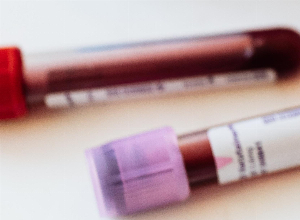Lupus: therapeutic education or how to become involved in your disease
Published Jun 17, 2019 • Updated Jun 18, 2019 • By Lee Ruiz
Laurent Chiche is an internist at the Marseille European Hospital and a member of the Carenity scientific committee. Its research project, the Lupus Living Lab, allows lupus patients to monitor their disease themselves to help research and better understand and manage their daily pathology.

Hello Laurent, thank you for agreeing to answer our questions. Can you explain what the Lupus Living Lab is all about?
The particularity of the Lupus Living Lab is its methodology: the project is carried out with patients from start to finish. The objective is for patients to become in control (take more of a leadership role) in the monitoring of their disease. The patients monitor their condition with on-board tools (UV sensor, interface application with the center, blood samples on the finger, stool sampling, etc.). The patient is educated on how to monitor and manage their disease through devices, which the team teaches them how to use. To put all this in place, patients reflect with us in small groups.
What is the purpose of the patient collected data?
The question is whether all these biomarkers are able to predict relapses/flares earlier than the common clinical signs or follow-up markers. The idea is to be able to anticipate a relapse when it is still at an early stage. With the information collected, we can track what has happened, what is happening, and what is not happening during a flare at the molecular level, or as a result of risk factor exposure behaviors, before the relapse is actually present.
Once collected, how is the data analyzed?
The Lupus Living Lab has the advantage of providing patients with tools to structure the analysis of all biomarkers collected. It provides the methodology. In addition, patients are in constant contact with the center. All the information is is analyzed, so the risk of having an incorrect analysis is lower. For example, it avoids wrongly incriminating a parameter such as a vaccine, an antibiotic, or an injection. This exhaustive monitoring, with a detailed analysis, is ideal for patients.

How does this contribute to the patient's therapeutic education?
A therapeutic education team is involved in the project because it is necessary to educate patients beforehand. Therapeutic education is vital in the management of lupus and will remain so, even with improved treatments. By knowing their disease, patients will be better able to manage the condition and recognize the symptoms of a flare or exacerbation so that they can contact their doctor as soon as possible.
How many patients are involved in this project?
About thirty patients will be followed for at least 6 months.
Can patients who are not participating in the Lupus Living Lab adopt the same approach?
Of course! It is recommended for patients to closely monitor themselves; it is recommended even to those participating in this project to monitor themselves outside the scope of the project! I would advise any individuals reading this to participate in similar monitoring as in this project in partnership with their doctor and to do it over a period of time, so that it does not become too burdensome. In the long term, we would like to extend the Lupus Living Lab method to more patients with a monitoring at the center.
What is the difference between the Lupus Living Lab and a traditional clinical trial?
The methodology of a clinical trial is different. When when were preparing to launch this project, our partners were interested in that approach. However, this approach was chosen because, despite the participants in a clinical trial being able to use the same tools as the Lupus Living Lab, the patients are often lonely between the required hospital visits in a clinical trial.
In your opinion, what role should the patient have in their care and treatment choice?
The role they want to have. There is no such thing as an unchanging ideal. Some patients, at the beginning of their illness, show a passiveness, which should not be blamed on them. Gradually, these patients will often become independent. There are phases when the patient is in need of "medical paternalism," even if this term may have a bad connotation. Sometimes doctors have to "pamper" patients until patients can get back on their feet. Of course, in the long term, when the disease is stabilized, there is no limit to the knowledge of the pathology and role in their own care that patients may have. Their wishes can be accommodated, sometimes even if they wish to implement a therapeutic interruption.
Discover soon the rest of our interview with Laurent Chiche: Lupus flares: what are the causes and symptoms? How can they be prevented, recognized, and treated? and Medical research in lupus: less toxic treatments and personalized medicine
What do you think of the Lupus Living Lab?
What are some areas of lupus, related to your daily life, that you do not understand?
1 comment

You will also like

No One Knows What Being Diagnosed with Multiple Sclerosis Is Like, So Maintain A Can-Do Attitude
Aug 17, 2018 • 12 comments

 Facebook
Facebook Twitter
Twitter
